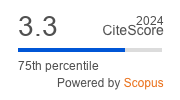Review | Open Access
| Ahead of Print | Last Modified: 4 December 2025
A Review of Digital Technology in Informal Education and Its Role in Educational Equity
| Views: | 202 | | | Downloads: | 108 |
Abstract: Digital technologies have profoundly transformed the landscape of education, enhancing learning approaches while raising concerns about digital equity. This review pays particular attention to informal education settings (e.g., public libraries, museums, and telecentres) and examines the application of digital technologies in these settings and their role in educational equity. Specifically, it focuses on the diverse Guangdong–Hong Kong–Macao Greater Bay Area (GBA), exploring the implications of digital technologies from a global perspective. Through a scoping review of 31 studies, this study synthesizes a broad spectrum of digital technologies employed in informal education, ranging from conventional digital tools (e.g., internet‐enabled computers, printers, and CD‐ROMs) to advanced digital technologies (e.g., online public access catalogs, immersive technologies, and artificial intelligence). By applying the PROGRESS‐PLUS framework’s equity dimensions, the review reveals the dual role of digital technologies: On one hand, the integration of digital technologies in informal education fosters inclusion for minority groups and improves accessibility to learning resources; on the other hand, it exacerbates disparities for individuals lacking access to digital infrastructure or sufficient digital literacy. The discussion explores the challenges and opportunities of digital integration in informal education, with specific implications for the GBA in China.
Keywords: digital technology; equity; Greater Bay Area; informal education
Published:
Ahead of Print
Issue:
Vol 14 (2026): Educational Equity and Sustainable Development: Stories From the Greater Bay Area in China (In Progress)
© Yufei Jiang, Chaoqun Lu, Bin Hu. This is an open access article distributed under the terms of the Creative Commons Attribution 4.0 license (http://creativecommons.org/licenses/by/4.0), which permits any use, distribution, and reproduction of the work without further permission provided the original author(s) and source are credited.


